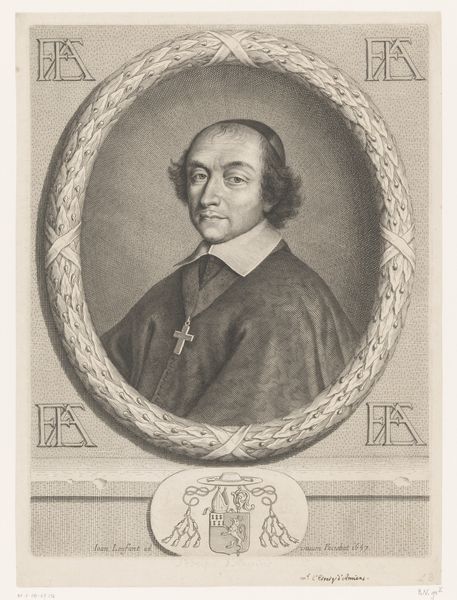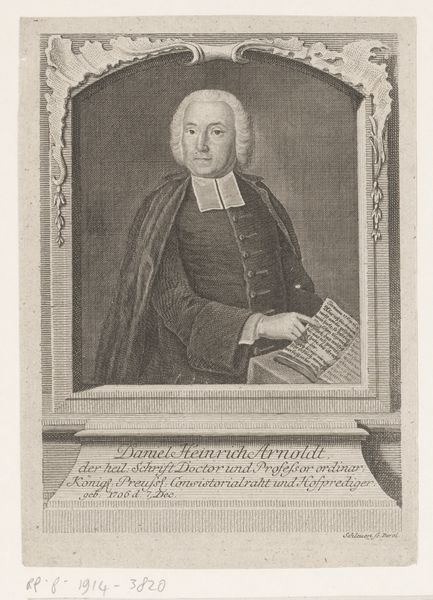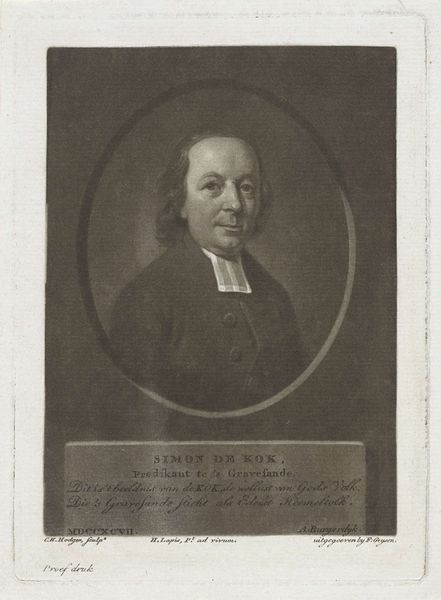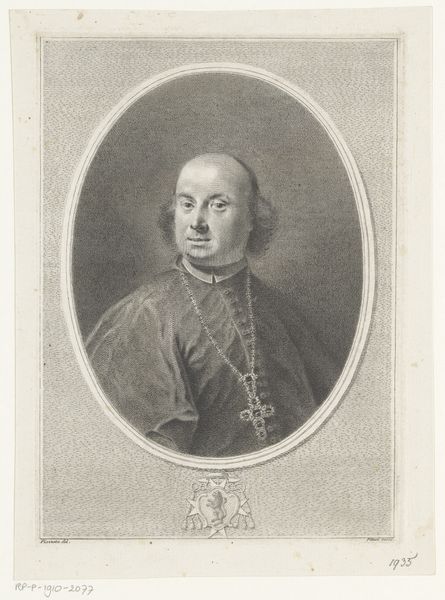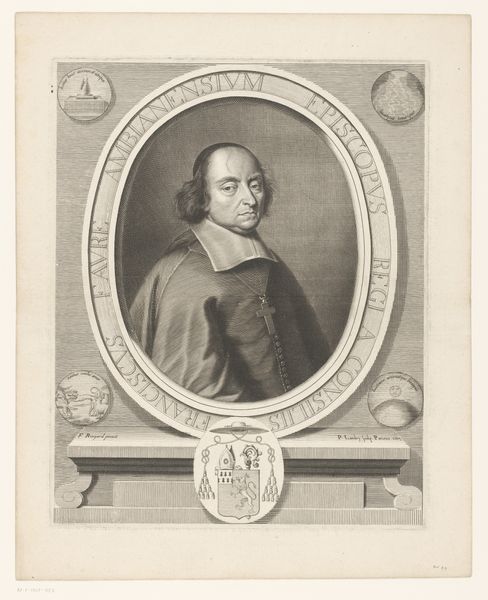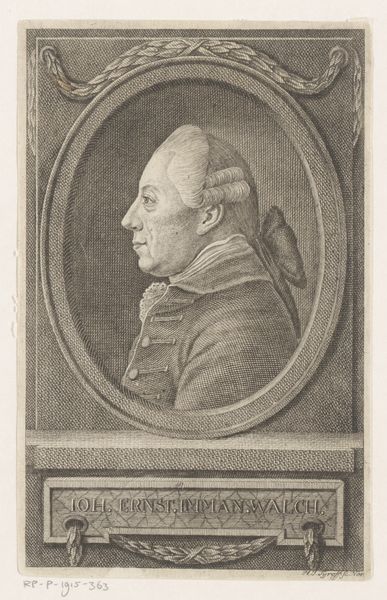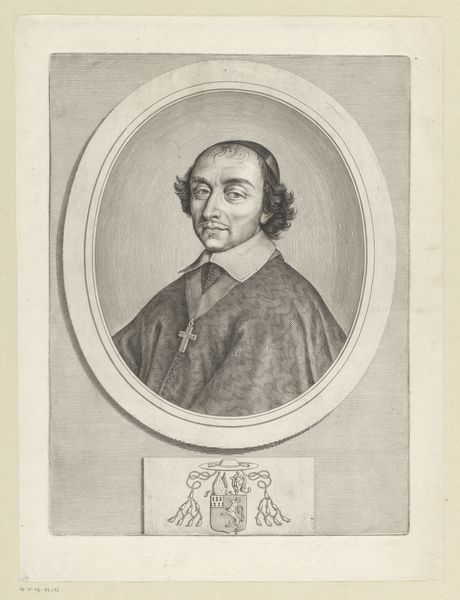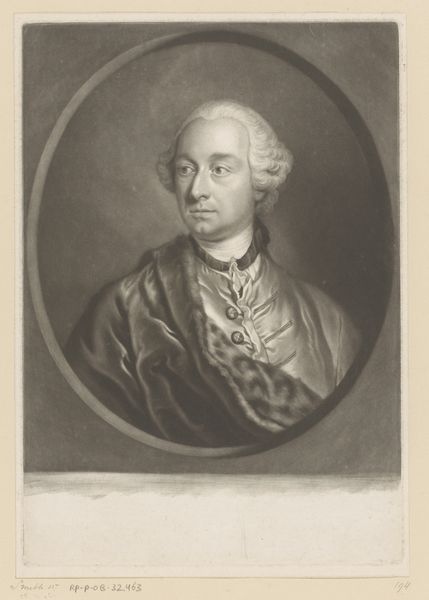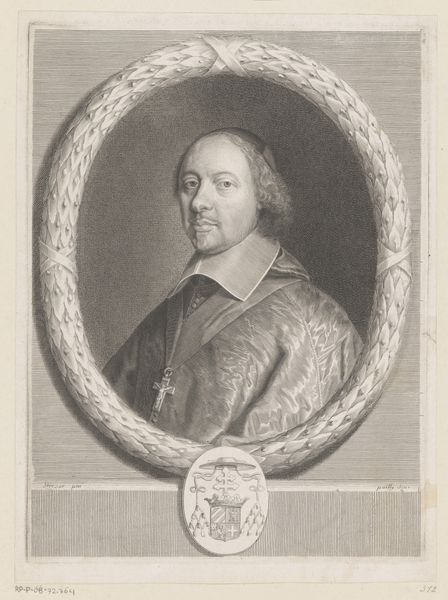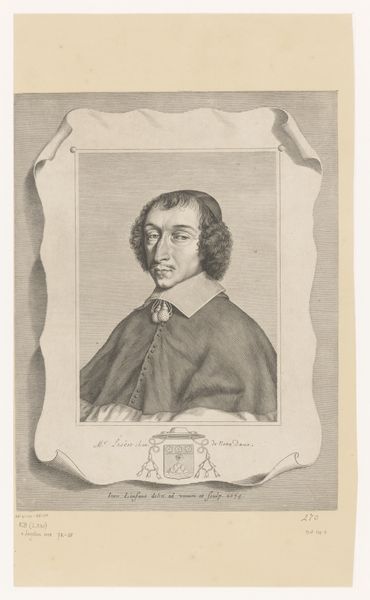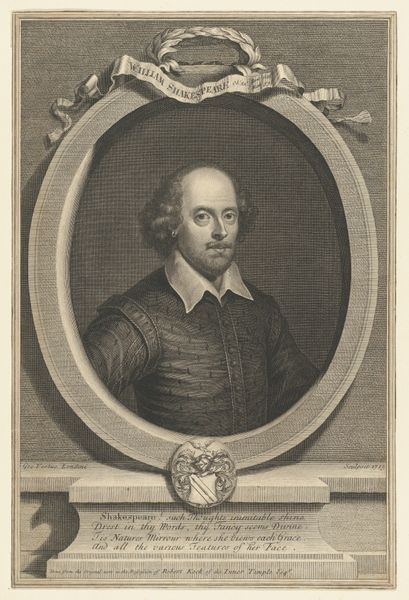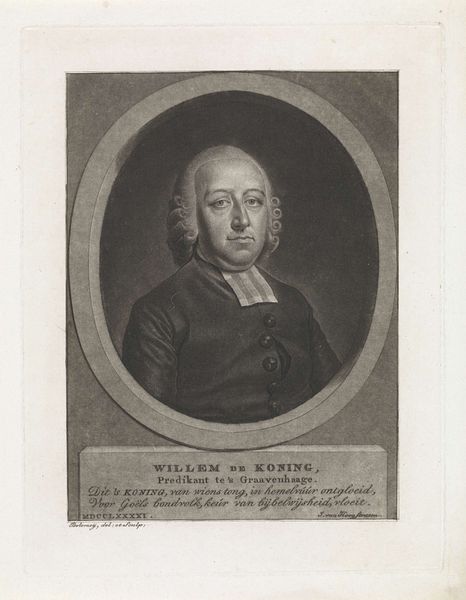
drawing, print
#
portrait
#
drawing
#
baroque
# print
#
history-painting
Dimensions: Sheet: 11 3/4 × 9 5/8 in. (29.9 × 24.4 cm)
Copyright: Public Domain
Curator: This print, dating roughly from 1720 to 1760, offers a striking likeness titled "Portrait of a Cardinal." Editor: My first thought? Cold authority. It’s all sharp lines and the cool remove in his eyes—very distant, even behind that ornamental oval. Curator: Indeed, there's a formality. We believe the portrait is attributed to Gr\u00e9goire Huret. The etching technique lends a starkness to the piece, further amplifying that feeling of cold distance that you’ve noticed. Editor: I am struck by the historical weight of the Cardinal. In this rendering, he embodies not just religious power but also hints at social hierarchy and probably the subjugation of the population. The attire says everything, doesn't it? The cross and heraldry practically scream power. Curator: Absolutely. Those symbolic details are carefully chosen and speak volumes. Although presented as a single person, this representation is a portrait of institutions. The church, of course, but even aristocratic heritage—did you notice the heraldic crest displayed just below him? It speaks to generational influence. Editor: The composition further reinforces his sense of control. That smooth, almost featureless background—it pushes him forward, doesn't it? All that space behind and around draws attention only to him and implies his power occupies almost limitless space. He dominates the image. Curator: I think that is quite right. As a portrait, I find the subject's direct gaze compelling, confronting the viewer and holding you to account. And though technically, it’s a print, you feel that it may as well be real. Editor: Perhaps it is that intense gaze and also that even more people had their lives directly affected by the Catholic church in those times, making this portrait so unsettling and dominant even today. For many, religion was as big as law. Curator: Food for thought. I find myself wanting to delve even deeper, beyond this powerful, unsmiling face, and to truly explore the dynamics between faith and social governance. Editor: Absolutely. Maybe what’s most important is to recognize that artworks such as this one encourage an engagement and questioning with our past and its continuing role today.
Comments
No comments
Be the first to comment and join the conversation on the ultimate creative platform.
